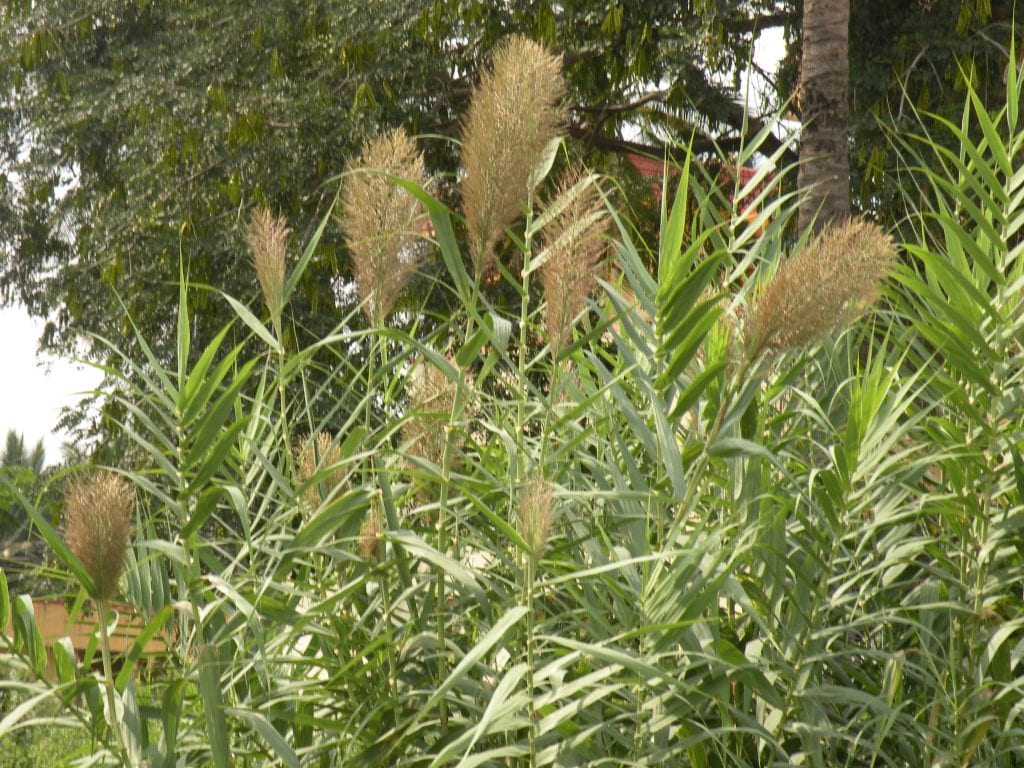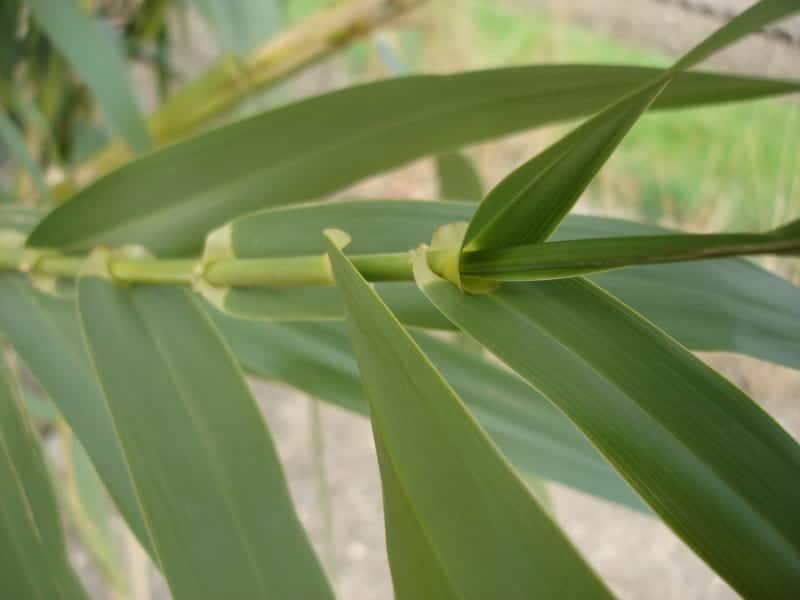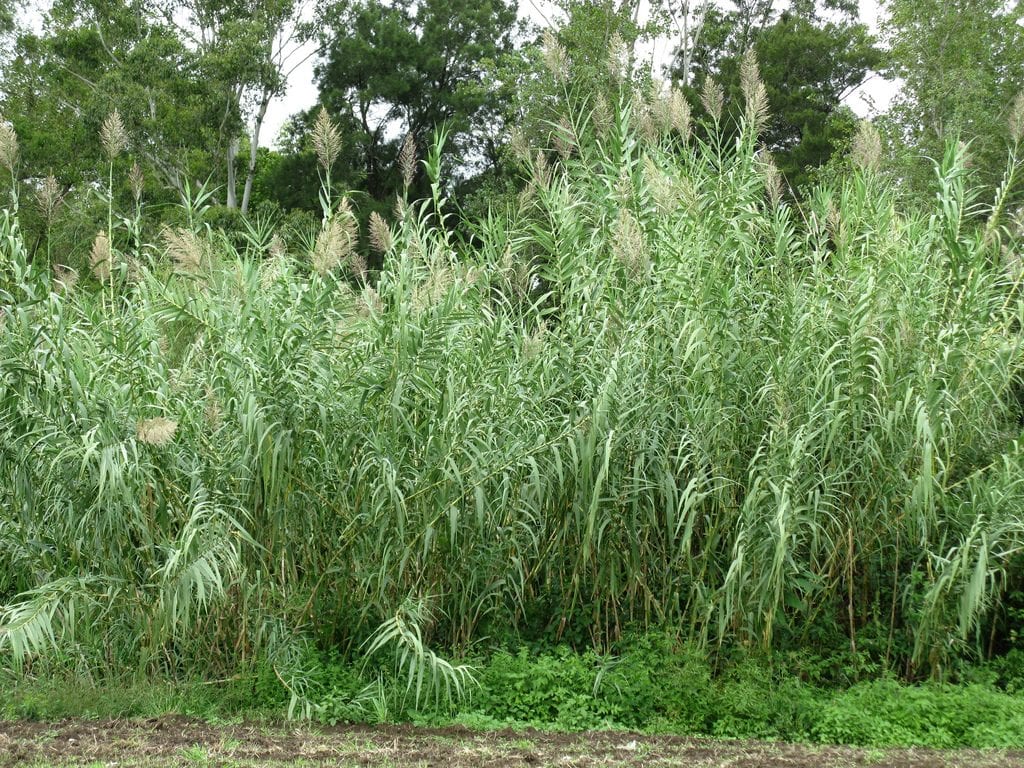
When you have a garden of a certain size, it is interesting to put fast-growing plants that serve to delimit some areas and that, incidentally, help us to have more privacy. Although there are many species that can comply with this, if we do not have much time, the ideal is to opt for the reed.
Why? Because it's almost as fast as bamboo, but It is also medicinal and very easy to care for.
Origin and characteristics

Our protagonist is a rhizomatous and evergreen herbaceous plant native to southern Europe whose scientific name is arundo donax, although popularly it receives the names of common cane, giant bulrush, false bamboo or reed. Grows to a maximum height of 6 meters, with thick, hollow stems. The leaves are lanceolate, and are between 5 and 7cm long. The flowers, which sprout in summer and autumn, are small purplish or yellow spikes 3-6dm in length.
Grows near waterways, where it forms colonies of several kilometers. For this reason, when it is grown in gardens, it should be planted in an area where we know that we are not going to put pools or paved floors, and where there will be few plants. In any case, to control its growth it is highly recommended to make a large planting hole, 1m x 1m, and put an anti-rhizome mesh.
What are their cares?
If we want to have a copy, we will take care of it as follows:
- Location: outdoors, in full sun or in semi-shade.
- Earth: it is indifferent as long as it has good drainage and is kept moist.
- Irrigation: frequent. It can be watered daily, and even on the lawn (at a distance of about 7m from pipes and others).
- Subscriber: there's no need.
- Planting time: in spring.
- Rusticity: supports up to -7ºC.
What uses does it have?

Apart from being used as an ornamental, the reed is used to make baskets, rugs and gates, as well as for light adobe constructions. But as if that weren't enough, the rhizome, both in decoction and in powder form, is diuretic, milk-repellent (prevents or dissolves gallstones) and diaphoretic (causes the secretion of sweat).
Yes, it is very important to consult a doctor before starting to use it, especially if we have already been diagnosed with gallstones (stones in the gallbladder) or we have had some colic in the area (in the right upper quadrant, that is, under the right breast), since home remedies can be very dangerous.
What did you think of the reed?